You must be logged in to rate content!
9 minute(s) of a 668 minute read
3-19-2012
I want to get more pictures of the choke system on most all carbureted engines.
On this particular carb, it uses a cable to set the choke, simply pull a lever and the choke plate closes. There is one other thing that happens when you pull the lever, it's called "high idle". When the choke plate is closed, at the same time there is a wedge/cam that raises the idle speed.
A look at the choke plate open.

Now a look at the choke plate closed.
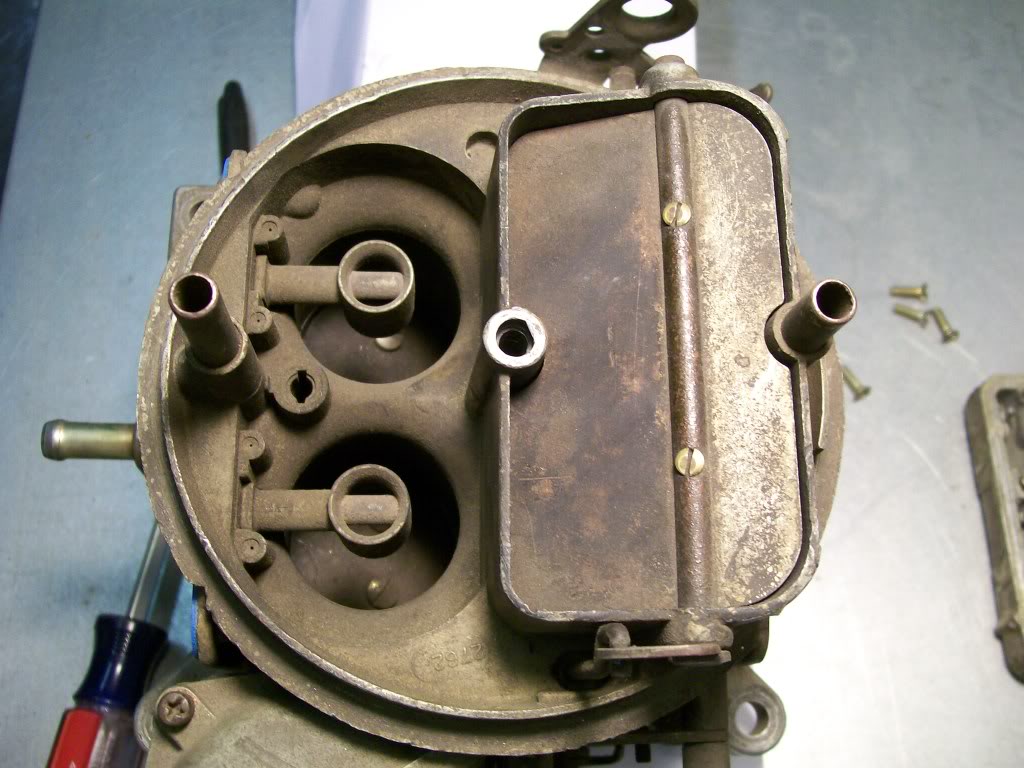
You can see the plate blocks the air supply very well. This produces a very rich mixture which is needed to start a cold engine
As you can tell, if that choke plate doesn't get opened just a little bit, it will flood the engine if it doesn't get air soon after start up. When this engine starts to run rough soon after starting, push the choke lever in a little bit to allow air into the engine, but not so much that you fully open the choke plate, it still needs to warm up.
This is a manual choke carb, by hand, all this happens.
Now, anybody want to venture as to how an automatic choke sets the choke plate closed?
Then after the vehicle starts, how does the choke plate open to allow some air to enter so the vehicle doesn't flood out from too much fuel?
Remember, with the automatic choke, you have no cable to control the operation
3-20-2012
cooter402.....It's good to hear from you again.
As I grew up in the '70s, working on cars and trucks, and now that I flash back to that time I remember removing the automatic choke on projects. Yup, it was the cool thing to do, remove that crap, it's just in the way.
Ha,ha, truth was, we didn't know the function and the workings of the automatic choke, so the tough guy thing to do was to remove it. Truth was, I lived up north where it was much colder, I can't count the days that I had to play with the throttle for the first couple minutes to keep the enginerunning.
If I knew what I was doing, I would have set up the automatic choke and started the vehicle and ran back inside where it was nice and warm til the vehicle warmed up.

I have to gather some pics and we'll get into the automatic choke. In the meantime, Read the enthusiasm that Scooter402 displayed in his reply above.
Once your knowledge grows in all these areas we've covered in this thread, it's like I've mentioned before, you look forward to reading and being involved in the theory and the inner workings of stuff, instead of backing away and being a shadow in the distance.
3-22-2012
Thanks for catching up, as you can see, we've gotten off the beaten path a little bit. Kinda left the jeep stuff behind for a bit and focused on how the jeep stuff runs.
You are quite correct, when properly tuned and adjusted, the automaticchoke does make life easier.
I only have two pictures so far. I took more but the camera didn't focus as well as I'd like.
The two pictures that I do have are of the part that is the heart of the automatic choke.
I hear it called a "choke thermostat" and "choke spring". Either way, it is made up of a flat wound coil. The wound coil is made by using two different metalic substances. The two metalic substances is called " bi-metallic", referrring to the two metallic parts.
The "bi-metalic" materials react at a different rate when exposed to heat and cold. With the two materials reacting different, there is a expansion/ contraction action that occurs.
The pictures will demonstrate better than words.
Here is the choke thermostat at room temperature. As far as the engine is concerened, this is at a cold temperature. The engine considers 180 to 200 degrees as room temperature.
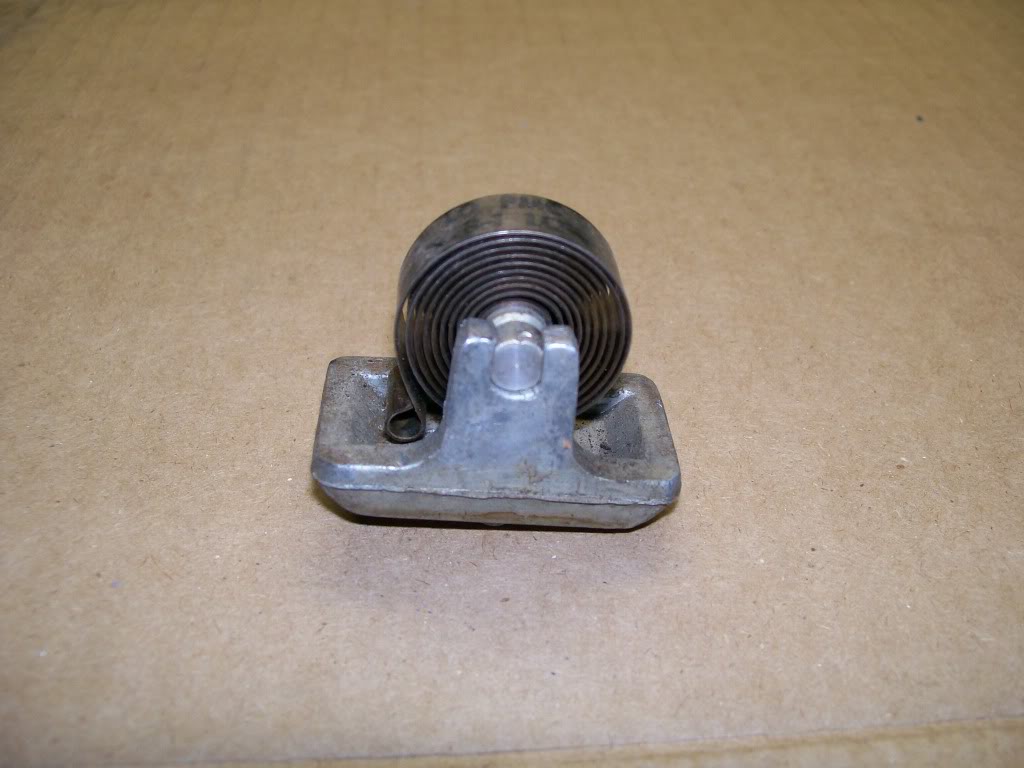
Notice the loop at the end of the wound coil. This loop is where a piece of linkage will fit into when intalled on the engine. From this loop, the linkage will go upwards to connect to the choke mechanism on the carb.
This next picture is what happened when I warmed up the wound coil with a lighter. As soon as I applied the heat, the loop started to raise upward.
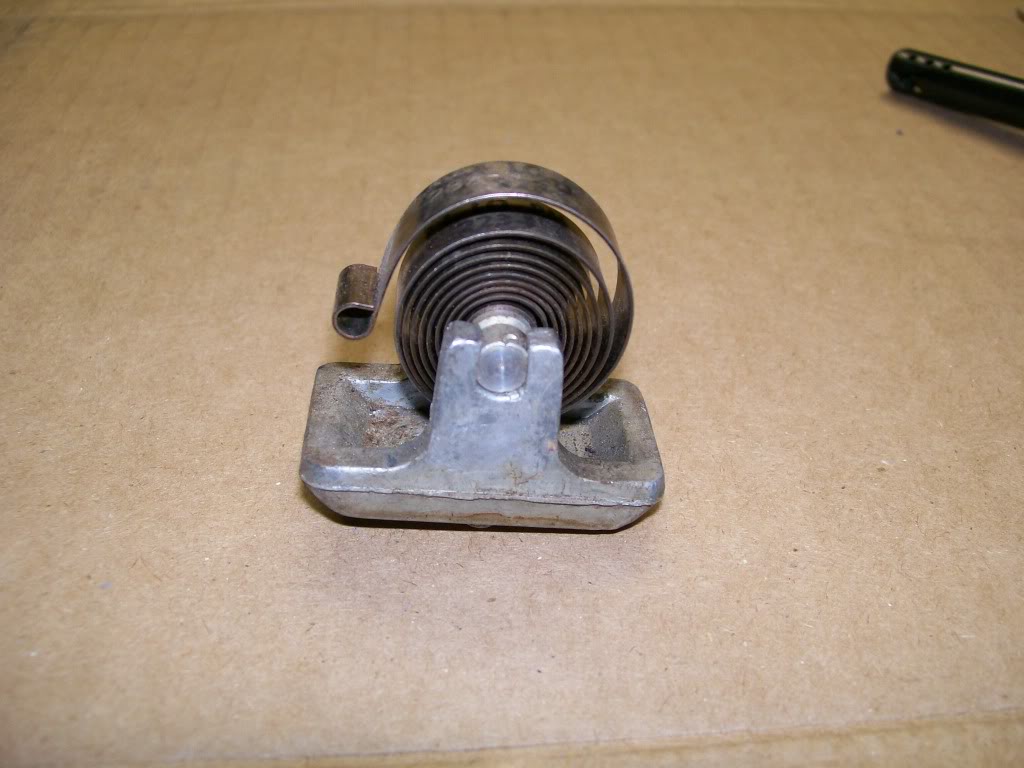
Ok, that's the idea. When the engine was cool, the wound spring contracted, when it contracted, it pulled a piece of linkage downward. The linkage then pulled downward on the choke mechanism, which closed the choke plate, shutting off the air going through the carb.
The choke thermostat is located on the intake manifold where there is a hot air passage that heats the wound coil spring. Once the wound coil spring becomes warmed, it expands. When the coil spring expands, it raises the linkage, which pushes upwards on the choke mechanism that will open the choke plate, allowing the air to flow through the carb again.
This one item replaces a manual choke cable.
My next pictures will show this process in action.
I've done enough writing tonight, but before the next write up, there is homework.
Just try to think back where you've seen carburetors with a round, black, plastic looking cup in the side of a carb. The diameter is around 2''. Any idea what is hiding behind the black cup?
3-23-2012
Scooter, I can tell you're just aching to raise your hand with the answer/ Knowledge is power, and you can feel it.
Knowledge is power, and you can feel it.
Let's get past the next couple pictures, then we'll answer the "black plastic cap" question...
First let's look at the choke thermostat in the "cold" condition. I made a quick piece of linkage to hook the thermostat to the choke mechanism on the carb. Notice the choke plate is in the closed position on the carb. This is the cold start position.
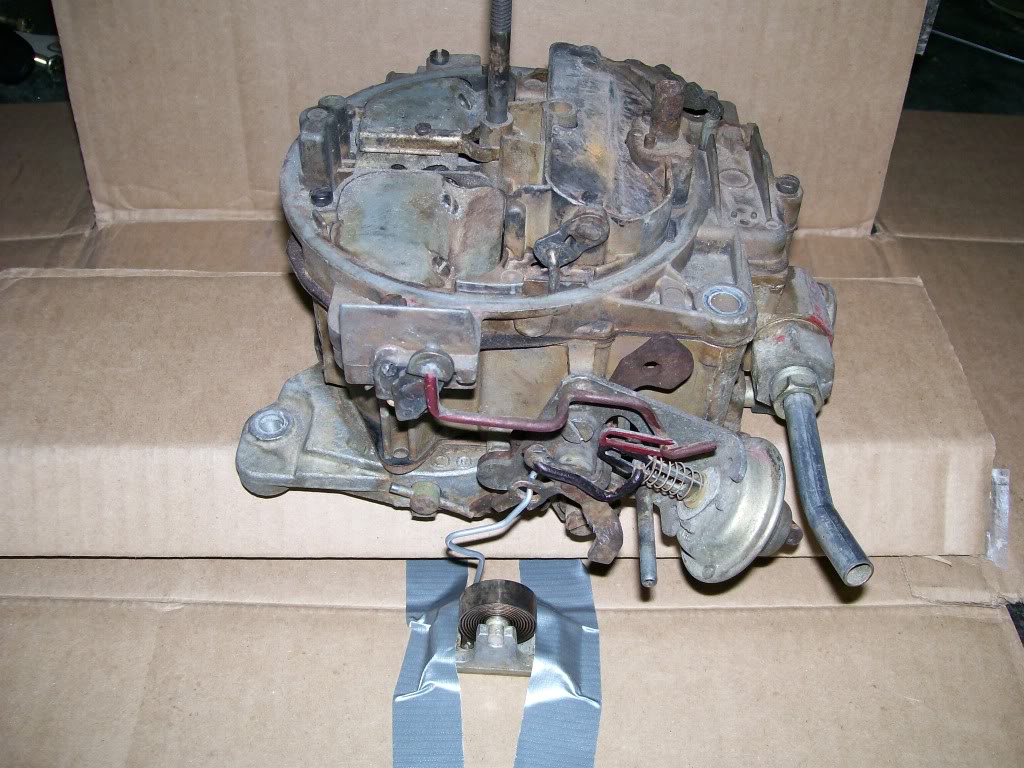
When the idea of adjusting the automatic choke has been mentioned, here is the first step of adjustment. The linkage I made that connects the choke thermostat to the carburetor has a purpose built shape to it. I could have made a straight linkage, but, just as the factory used, I put a couple bends into it. By either bending the linkage more, or, straightening it out, I can adjust the time it will take to begin opening the choke plate on warm up.
A simple form of adjustment, just easily overlooked if one doesn't understand the concept.
In this next picture, I did nothing to the carb or to the linkage. By using the lighter I heated the choke thermostat. As it heated up, the linkage slowly rose upwards and opened the choke plate to normal engine operating temperature. How cool, , all this happens everyday, everytime we start the vehicle.
, all this happens everyday, everytime we start the vehicle.
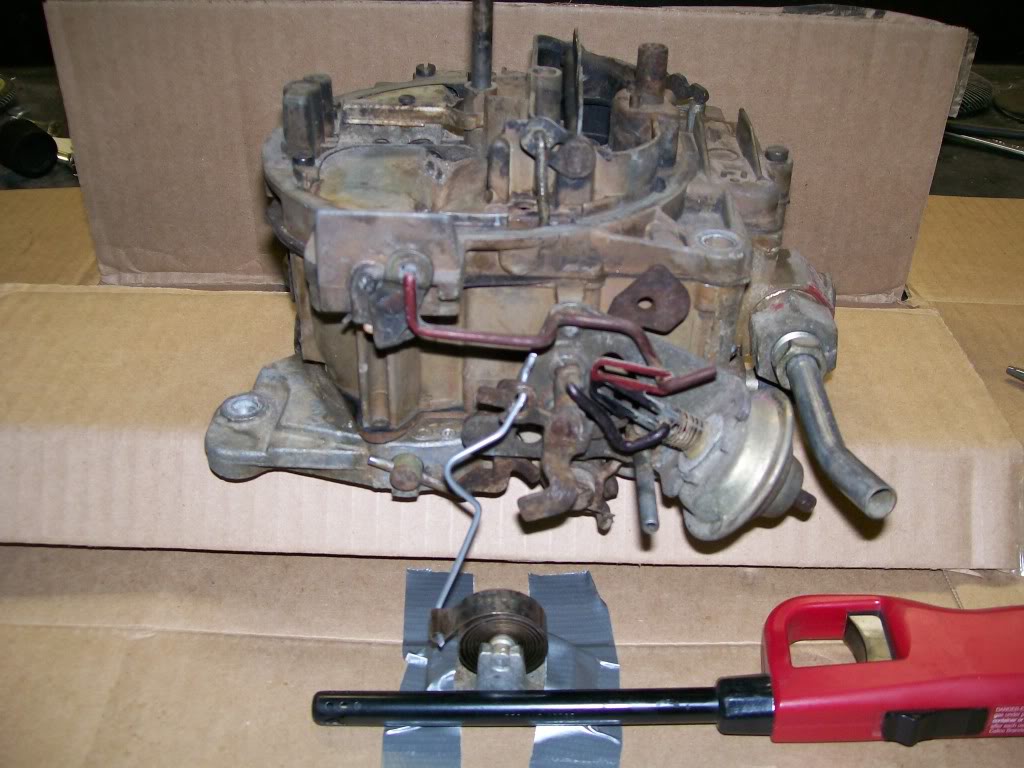
Note.... on the engine, the aluminum base of the choke thermostat absorbs the heat and transfers it the the wound flat coil. There is a shield that snaps over the top to keep the heat within. If there was no cover, the wind from the fan blade would cool the choke thermostat and it wouldn't open the choke plate properly.
Note... I colored one piece of linkage black and another one I colored red. The black represents more choke linkage. The black one hooks to a vacuum diaphram canister. This canister leads to the next picture having to do with the "choke pull off". This is the item that will open the choke plate enough to allow the engine to get air at cold start. Study the last couple pics and see if you can tell how it opens the choke plate at start up.
Note... I mentioned the purpose of the black linkage, but didn't mention the purpose of the red linkage...and ideas?
I hated homework in school, yuck! But I know now that it was a way to demonstrate that I had a grasp of the theory I was to absorb in school. The red linkage has everything to do with the Holley carb we already covered.
In the real world you're gonna come across different ways of accomplishing the same function. If you understand the theory, the different design won't bother you. If you don't understand the theory, forget it. you could be there for a while.
Scooter402, this is the perfect time, having to do with different designsaccomplishing the same function. Want to answer the black plastic cap thingy?